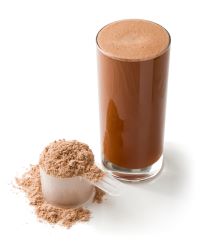Infographics
Search >>
Discover expert insights from Cheryl Muse, Rail Manager at Eurofins Grain Inspection, as she shares practical tips and key indicators for evaluating grain quality and mycotoxin risks—backed by over 20 years of industry experience.
Discover how Eurofins Product Development & Innovation helps private equity firms turn promising food & beverage startups into scalable, profitable brands through technical expertise, consumer insight, and product development rigor.
Have questions about the Eurofins ANSI 173 Finished Dietary Supplement and Ingredient Certification or Eurofins Protocol 101? Check out our guide for the answers to frequently asked questions regarding Eurofins Certification.
In the initial MAHA report, ultra processed foods (UPFs) took center stage due to their lack of nutrient value, high caloric nature, and inclusion of suspect ingredients. Among those suspect ingredients, the MAHA commission has highlight seed oils. In this blog, we help give clarity on how food companies can look at seed oil inclusion in their products.
Discover expert insights into navigating Out-of-Specification (OOS) results and CAPA investigations. Learn key steps and strategies our technical team uses to resolve unexpected analytical outcomes effectively.
As consumer demand for cleaner labels and naturally derived ingredients continues to rise, many manufacturers of OTC and dietary supplement products are reformulating to remove artificial colors and dyes. While this shift aligns with market trends, it introduces significant challenges—especially when it comes to product stability.
Get key insights from the MAHA Commission’s second report, released September 9, outlining strategic steps for implementation and updates to its original findings.
Discover why analytical testing is essential for dietary supplement and confectionery brands reformulating with natural colors—ensuring compliance, quality, and consumer trust.
Discover how SDS-PAGE, a powerful protein analysis method, supports ingredient quality, transparency, and innovation in the food industry—from meat and dairy to plant-based products.
Discover why CFIA mandates 1500g lettuce testing for romaine imports from U.S. regions, how larger sample sizes improve detection of E. coli O157:H7, and the differences between pooling subsamples and direct 1500g testing methods. Learn key compliance, validation, and risk management considerations for growers, shippers, and buyers to ensure food safety and maintain market access.
















